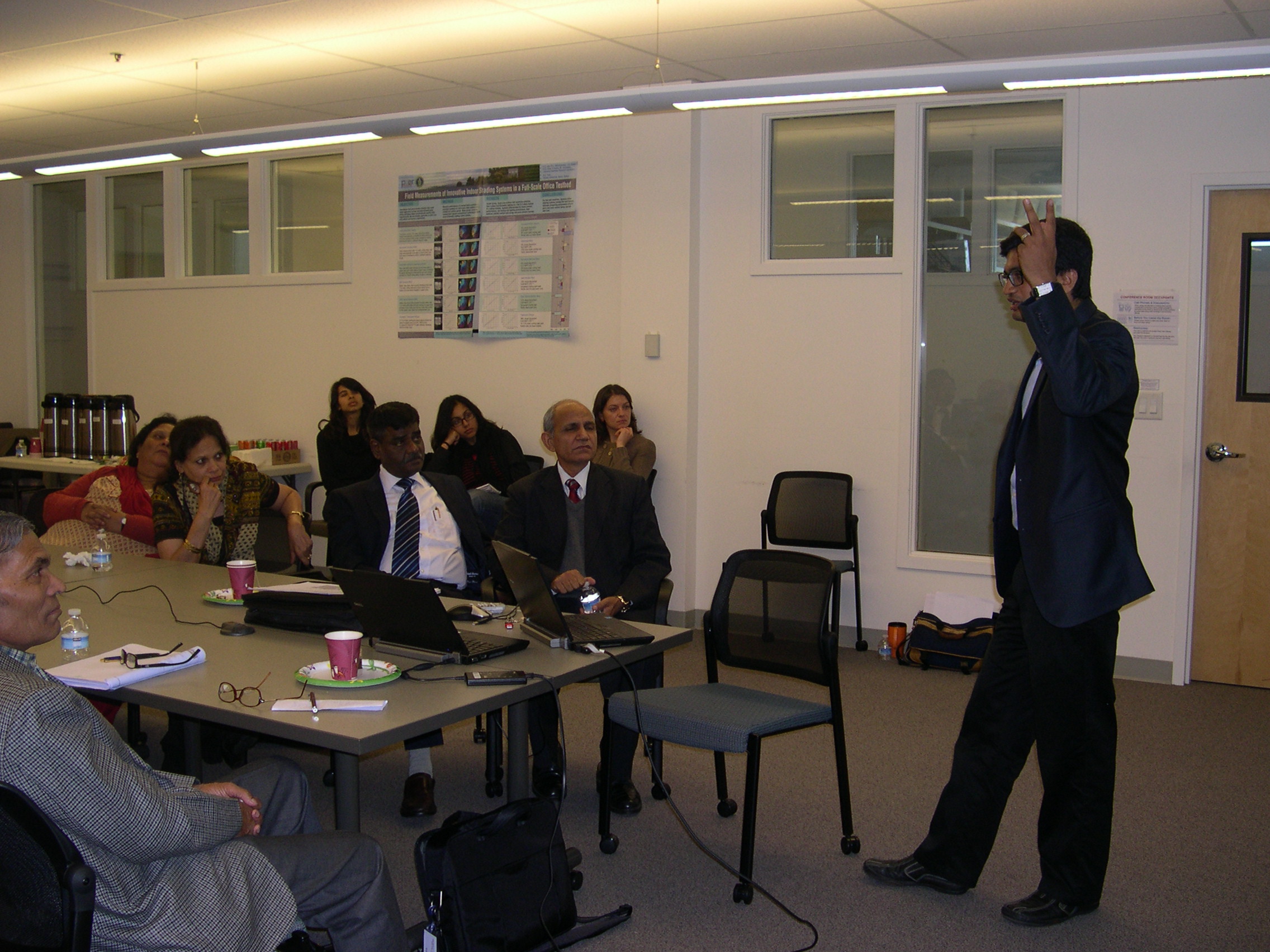With the Indian economy growing by leaps and bounds yet hampered by regular power shortages and blackouts, Indian electricity regulators are in a tough spot. How to wring more electricity from very limited infrastructure? The answer lies in energy efficiency, and through collaborations with the Lawrence Berkeley National Laboratory India is hoping to learn from California’s successes in implementing energy efficiency and demand-side management to meet energy demand.

Berkeley Lab researcher Amol Phadke (right) spoke to a delegation of electricity regulators from India about the energy savings potential of super efficient appliances.
This week a delegation of 20 electricity regulators from 16 Indian states visited Berkeley Lab for a study tour that included visits to Sacramento to hear from the grid operator and a utility and to Bakersfield to tour a solar power facility. The trip also featured presentations by the California Energy Commission and the California Public Utilities Commission, which, along with Berkeley Lab, signed a Memorandum of Understanding with India’s Forum of Regulators in 2009 to consult on best practices in utility-based energy-efficiency programs.
This is the second year that Indian electricity regulators have visited California under the MOU, and much progress has been made in the last year, said Berkeley Lab senior scientist Jayant Sathaye, one of the main organizers of the visit. “The public utility company of the state of Maharashtra has set up a demand-side management coordinating committee and started pilot programs for fans and lighting,” he said.
Another step forward has been the launch of the Super-efficient Equipment and Appliance Deployment (SEAD) initiative, championed by the U.S. Department of Energy and launched by the Clean Energy Ministerial to expand global markets for efficient products in member countries. “India is an active member, probably the most active,” Sathaye said. “The Bureau of Energy Efficiency is running the program in many states and is starting with electric fans. Berkeley Lab is doing all the analysis.”
The program will eventually include TVs, refrigerators and other household appliances, which are becoming increasingly popular with Indian consumers as more and more enter the middle class. Berkeley Lab researcher Amol Phadke presented analysis to the delegation showing the potential energy savings from higher penetration of super efficient appliances. “We feel 70% of infrastructure that will exist in 2030 has not yet been purchased,” he said. “So let’s not correct mistakes. Let’s avoid mistakes.”
As in the United States, state authorities in India have regulatory power, yet awareness of energy efficiency is still relatively low. “We’ve learned a lot of things here,” said delegation member Ram Pal of the Haryana Electricity Regulatory Commission. “The realities in India are different from here, so it won’t be that easy to implement these programs, but we want to try to realize the savings. We have big shortages in my state.”
Berkeley Lab’s ongoing work in India was formalized in 2008 with the launch of the Berkeley-India Joint Leadership on Energy and the Environment, or BIJLEE (which means “power” in Hindi), a collaboration that also includes UC Berkeley.
Berkeley Lab is also working with India to improve the energy efficiency of its data centers and buildings, two of the fastest-growing sectors of the Indian economy. Researchers collaborate with developers and IT companies such as Tata and Infosys who account for much of the growth in India’s special economic zones.
“They’re building buildings like crazy in India,” said Berkeley Lab scientist Girish Ghatikar. “Infosys designs a new building every 20 days. It’s very important that we guide them to grow sustainably. India needs at least 66 percent more buildings to be able to support the growth it’s experiencing. If they’re not growing sustainably, energy supply will become a very critical issue.”